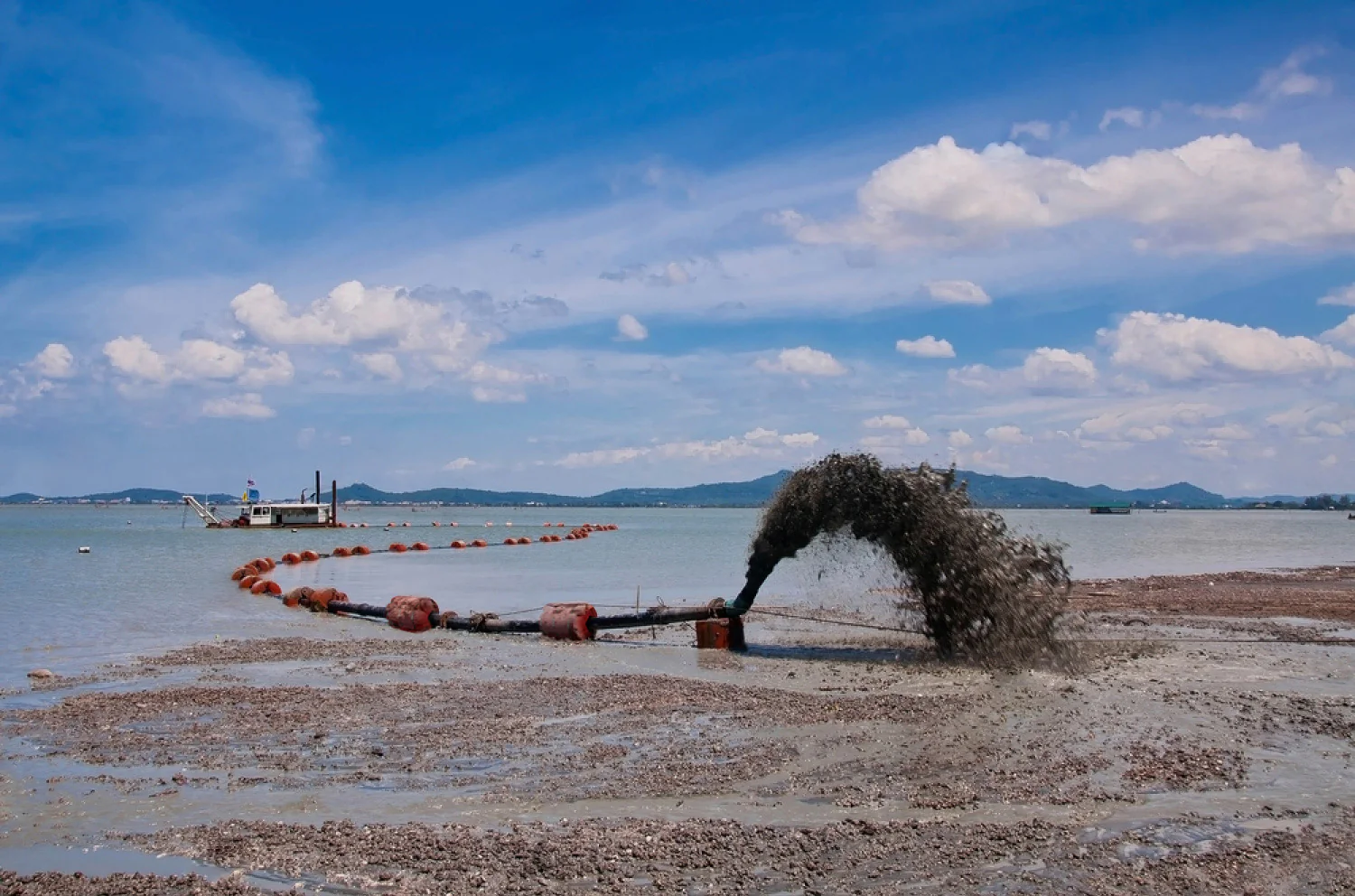Dredging
- Home
- Industries
- Dredging
Hose floats are used in dredging to keep the pipeline, which is used to transport the dredged material, buoyant and afloat. Pipeline floatation allows the dredging equipment, such as a dredge or excavator, to move more quickly and efficiently through the water as it removes and transports sediment, sand, or other materials from the bottom of a body of water.
The hose floats help keep the pipeline in the desired position and prevent it from sinking or getting caught on underwater obstacles. Additionally, the buoyancy provided by the hose floats allows the pipeline to move with the currents and waves, reducing the risk of the pipeline becoming kinked or damaged and allowing the pipeline to follow the contours of the bottom of the water body.

During dredging operations, dredged materials are pumped through a dredge pipe float from the dredging site to where the materials are deposited. The pipeline floats are attached to the pipeline at regular intervals and help keep the pipeline afloat on the water’s surface.
By keeping the pipeline afloat, the hose floats also help reduce the drag on the pipeline, allowing the dredge pump to operate more efficiently and preventing the pipeline from being damaged by submerging in the water.
The pipeline floats help support the pipeline as it is laid across a body of water, which helps to prevent the pipeline from sinking or becoming submerged in the water. This is especially important when the pipeline is laid across deep or uneven water body areas, such as channels or over obstacles on the bottom of the water body. The hose floats play a crucial role in the laying process.
Additionally, pipeline floats can also help maintain the proper alignment of the pipeline during the laying process. They can also help prevent the pipeline from getting tangled or kinked, which can cause damage and reduce the efficiency of the dredging process.
There are several reasons why pipeline floats are used in dredging:
Buoyancy: The main purpose of pipeline floats is to keep the pipeline buoyant and afloat, which allows the dredging equipment to move more easily and efficiently through the water.
Positioning: The floats help keep the pipeline in the desired position and prevent it from sinking or getting caught on underwater obstacles.
Current and wave protection: The buoyancy provided by the floats allows the pipeline to move with the currents and waves, reducing the risk of the pipeline becoming kinked or damaged.
Contour following: By providing buoyancy, floats allow the pipeline to follow the contours of the bottom of the water body, which increase the accuracy of dredging.
Safety: floats make the dredging process safer for personnel and equipment by reducing the risk of damage to the pipeline and other equipment.
Environmental Impact: Using floats can minimize the environmental impact of dredging by allowing the pipeline to be positioned in such a way as to reduce the disturbance to sensitive marine habitats and aquatic life.
